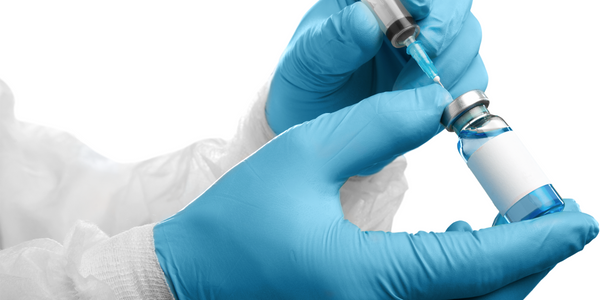Customer Company Size
Large Corporate
Region
- Europe
Country
- Czech Republic
Product
- ICONICS GENESIS32
- GraphWorX32
- TrendWorX32
- ScriptWorX32
Tech Stack
- Siemens Simatic S7 OPC server
- Microsoft Excel
- VBA 6.0
Implementation Scale
- Enterprise-wide Deployment
Impact Metrics
- Productivity Improvements
- Digital Expertise
Technology Category
- Application Infrastructure & Middleware - Data Exchange & Integration
Applicable Industries
- Pharmaceuticals
Applicable Functions
- Process Manufacturing
- Quality Assurance
Use Cases
- Process Control & Optimization
- Regulatory Compliance Monitoring
Services
- System Integration
- Software Design & Engineering Services
About The Customer
Leciva, a.s. Pharmaceutical is the largest Czech pharmaceutical company and dominates both the Czech and Slovak markets. Their main business is pharmaceutical production and distribution. The company was founded in 1993 under the Czech Republic National Enterprise. In 1997, the Czech government sold all the remaining shares it held to Leciva, a.s. They sell the majority of their pharmaceutical substances to developed industrial countries in the EU, Eastern Europe (Slovakia, Russia, Poland, Ukraine etc.). Leciva, a.s. dominates the local Czech Republic market with a 65% share of the production of this pharmaceutical substance sector.
The Challenge
Leciva, a.s. Pharmaceutical, the largest Czech pharmaceutical company, needed a system to meet their high recording requirements for documenting every aspect of their production process to meet GMP (Good Manufacturing Practice) standards. They required a system that provided extensive security measures, audit trails for operators, reliable logging of all production data, operational sequence checking, and traceable alarm and event history recordings. The system also needed to meet their process documentation, production data collection, and report requirements to meet their GMP standards.
The Solution
Leciva, a.s. selected ICONICS to provide them with their pharmaceutical production management system. ICONICS’ GENESIS32™ software suite of tools was installed at their production operations in Prague, which include GraphWorX™32, TrendWorX™32 and ScriptWorX™32. The GENESIS32 Software is running on a Siemens Simatic S7 OPC server. The GENESIS32 system monitors every aspect of the production operation, provides clear directions and information for each of the operators via GraphWorX32 HMI screens and collects production data which is stored in Microsoft Excel spreadsheets and presented in numerical and graphical formats. The software system interfaces with a Siemens S7-400 PLC, connected to a Simatic and one gauge system. There is one PC node implemented and the system has over 1,000 digital and analog tags. The GENESIS32 system processes over 100 scripts that can run simultaneously using VBA 6.0 integrated into ScriptWorX32.
Operational Impact

Case Study missing?
Start adding your own!
Register with your work email and create a new case study profile for your business.
Related Case Studies.

Case Study
Case Study: Pfizer
Pfizer’s high-performance computing software and systems for worldwide research and development support large-scale data analysis, research projects, clinical analytics, and modeling. Pfizer’s computing services are used across the spectrum of research and development efforts, from the deep biological understanding of disease to the design of safe, efficacious therapeutic agents.

Case Study
Fusion Middleware Integration on Cloud for Pharma Major
Customer wanted a real-time, seamless, cloud based integration between the existing on premise and cloud based application using SOA technology on Oracle Fusion Middleware Platform, a Contingent Worker Solution to collect, track, manage and report information for on-boarding, maintenance and off-boarding of contingent workers using a streamlined and Integrated business process, and streamlining of integration to the back-end systems and multiple SaaS applications.

Case Study
Process Control System Support
In many automated production facilities, changes are made to SIMATIC PCS 7 projects on a daily basis, with individual processes often optimised by multiple workers due to shift changes. Documentation is key here, as this keeps workers informed about why a change was made. Furthermore, SIMATIC PCS 7 installations are generally used in locations where documentation is required for audits and certification. The ability to track changes between two software projects is not only an invaluable aid during shift changes, but also when searching for errors or optimising a PCS 7 installation. Every change made to the system is labour-intensive and time-consuming. Moreover, there is also the risk that errors may occur. If a change is saved in the project, then the old version is lost unless a backup copy was created in advance. If no backup was created, it will no longer be possible to return to the previous state if and when programming errors occur. Each backup denotes a version used by the SIMATIC PCS 7 system to operate an installation. To correctly interpret a version, information is required on WHO changed WHAT, WHERE, WHEN and WHY: - Who created the version/who is responsible for the version? - Who released the version? - What was changed in the version i.e. in which block or module of the SIMATIC PCS 7 installation were the changes made? - When was the version created? Is this the latest version or is there a more recent version? - Why were the changes made to the version? If they are part of a regular maintenance cycle, then is the aim to fix an error or to improve production processes? - Is this particular version also the version currently being used in production? The fact that SIMATIC PCS 7 projects use extremely large quantities of data complicates the situation even further, and it can take a long time to load and save information as a result. Without a sustainable strategy for operating a SIMATIC PCS 7 installation, searching for the right software version can become extremely time-consuming and the installation may run inefficiently as a result.

Case Study
ELI LILLY ADOPTS MICROMEDIA’S ALERT NOTIFICATION SYSTEM
Pharmaceutical production is subject to a strict set of enforced rules that must be adhered to and compliance to these standards is critically necessary. Due to the efforts of WIN 911’s strategic partner Micromedia, Lilly was able to adopt an alarm notification infrastructure that integrated smoothly with their existing workflows and emergency hardware and protocols. These raw energy sources enable the industrial process to function: electricity, WIN-911 Software | 4020 South Industrial Drive, Suite 120 | Austin, TX 78744 USA industrial steam, iced water, air mixtures of varying quality. Refrigeration towers, boilers and wastewater are monitored by ALERT. Eli Lilly identified 15000 potential variables, but limitations compelled them to chisel the variable list down to 300. This allowed all major alarms to be covered including pressure, discharge, quantity of waste water discharged,temperature, carbon dioxide content, oxygen & sulphur content, and the water’s pH.








